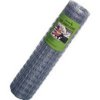I think it would take a lot longer to get results if you cut it to the ground. The ones I have seen were done with existing growth. You have to do some homework either way. As long as the area you fence has the same type of species makeup and amount of regen as the general area that is outside the fence and you have documented the average height and density of as many species of plant as you can directly inside and outside the cage you wouldn't want to kill it all. You don't need a "blank slate" as long as you know what you have to start with. It doesn't have to be scientific or anything like that, just a basic idea of the makeup of the general plant community and initial density and height through photos and a few notes. That way you will have an idea of not only browse pressure, but if the deer are singling out a particular species and other species are filling in in place of what is being browsed. You will typically find that they will key on the more preferred species first and then move on to less desirable plants as they eat the better stuff to the ground. For example, you could end up with an equal amount and height of regen in both areas, but if the stuff inside the cage is sugar maple, white pine, and trillium's versus the stuff outside the cage being a patch of bracken ferns and other undesirables, it would give you a better idea of what is going on.

